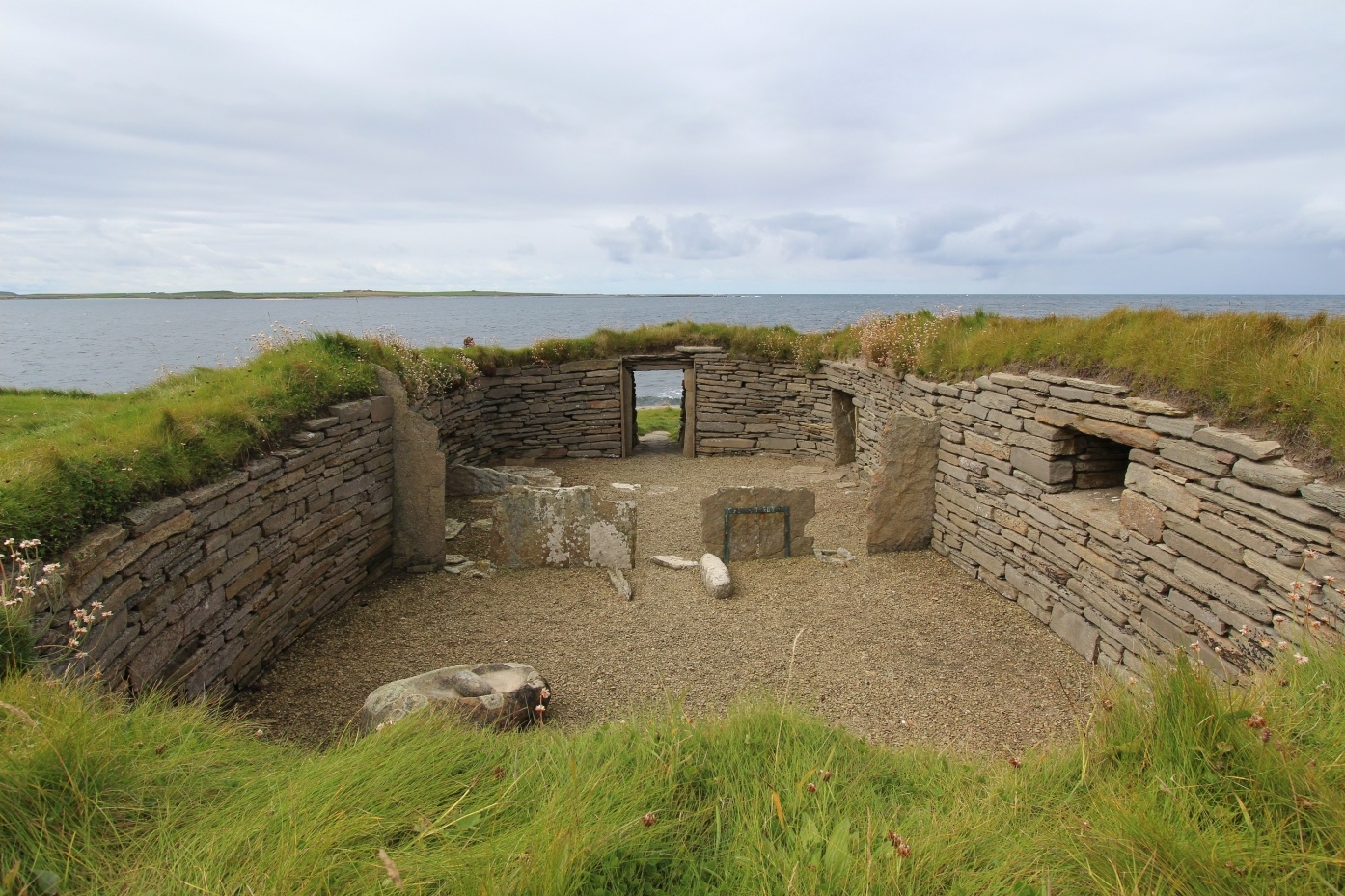Research project
Home sweet home
Investigating Neolithic houses in Britain through microwear and residue analysis of stone tools
Research question
The central question of this project is, what happened in Neolithic houses and therefore, what did houses represent to Neolithic people?

Short abstract
What is a house? The answer to this question may seem obvious to us, but what did a house represent to the people that first built them during the Neolithic period 5000 years ago? Did they view their domiciles in the same way that we do today?
Social relevance
What is a house? The answer to this question may seem obvious, but even in today's society houses represent many different things, they are places intimately connected with memories, places we keep our belongings, places we think of as a refuge from the outside world. The question is rather harder to answer when we look at the first substantial houses built during the Neolithic period. This projects seeks to address that question by exploring how Neolithic people thought about the houses they lived in.
Scientific relevance
The project seeks to explore the way that Neolithic people thought about their houses through a practice-based approach. The starting premise is that areas around houses are spaces defined by activities (cooking, hide working, flint knapping, pottery making etc.). Therefore, to understand what houses represented to Neolithic people it is first necessary to understand what types of activities took place in and around them. This will be achieved by reconstructing the character and spatial arrangement of those practices using use-wear analysis, a type of analysis that links the microscopic wear traces found on tools to the particular materials (e.g. bone, hide, wood etc) that the tools were used on. Using this type of analysis we can reconstruct the range of practices that were associated with different Neolithic houses.
Why Leiden University?
The Faculty of Archaeology at Leiden University is the ideal place to conduct this research due to its longstanding expertise in the prehistory of northwestern Europe and especially because of the excellent facilities and history of use-wear research of the Laboratory of Material Culture Studies, led by Prof. dr. Annelou van Gijn.
Materials and methods
The construction of houses is a defining feature of the earliest farming communities in NW Europe, but we have a limited understanding of the role of the house in the development of Neolithic societies. How was the house constituted? How did dwelling in houses alter the composition of daily maintenance tasks? How did these changes effect social reproduction? This project addresses these fundamental questions within the context of the British Neolithic.
Two case studies have been chosen that include the best-preserved Neolithic houses in Britain. These are as follows:
- the Orkney Islands, which have some of the best preserved stone-built domestic architecture in western Europe. The project will focus on the Neolithic settlements of the Braes of Ha'Breck, Wyre, and Barnhouse, near Stenness.
- the Late Neolithic settlement at Durrington Walls, located 3km from Stonehenge, where a Neolithic village has been found with well-preserved occupation surfaces including house floor deposits and extensive middens.
The case studies include a variety of settlement types (e.g. individual/aggregated, short-term/long-term). The project will conduct an extensive functional analysis, principally in the form of a use-wear study of the worked flint assemblages from the sites in question. This will be used to indicate the range of material practices that were conducted at different settlements and whether different forms of settlements were associated with different ranges of technical activities. Ultimately, it will show how houses were used during their earliest developmental stage.

 The project is funded by the European Union under the FP7 Marie Curie Actions Intra-European Fellowship programme (Project No. 328642).
The project is funded by the European Union under the FP7 Marie Curie Actions Intra-European Fellowship programme (Project No. 328642).